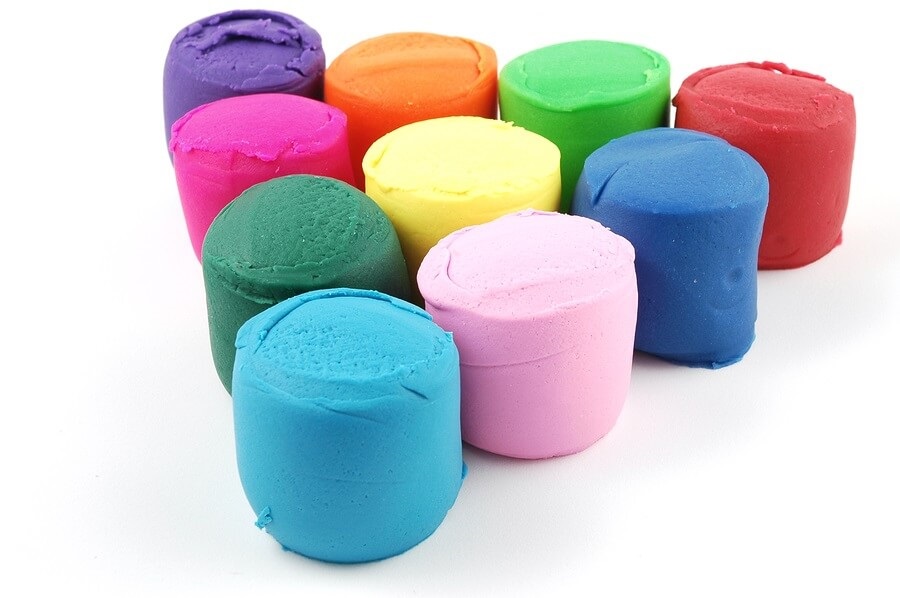Doughn't Give Up on Dividing Fractions

My fifth-grade math class just finished a unit on multiplying and dividing fractions. The multiplying fractions part was, in the students' words, "too easy." It was not difficult for them to catch on that when we multiply 1/4 by 6, for example, that we were really counting six quarters. Both the concept and the execution (multiply numerator by numerator and denominator by denominator) seemed like a no-brainer to them.
However, when we reached the fraction division, the learning screeched to a halt. The concept of taking one fraction and dividing it by another fraction was as foreign to the students as making a mix tape by recording songs off the radio. (You did that, too, right??) Anyway, I tried drawing pictures on the board, using a number line, and even making paper strips of various lengths to make this concept more visual for my students. And while these approaches may have worked for other students, mine simply weren't getting it. Frustrated, I went home and posted on a Upper Elementary Educators facebook group, hoping for solutions that I hadn't thought of yet. Another teacher came through for me, suggesting the use of play dough. That night, I made a quick trip to the store to get dog food (how were we out of that again??) and a pack of brightly-colored play dough.
The next day, I had my fifth grade math class sit around my large table at the front of my class. I looked for a student who was sitting nicely and not fooling around and allowed them to choose the first color of play dough. I passed the play dough to that student, as they would be the first to demonstrate for class. (Note: very very important - It is tempting as a teacher to just do it yourself with the play dough and show the students, but they will lose interest quickly if they don't get a chance to touch the play dough. Also, the concept becomes much more concrete if they get to do it themselves.) We started with a whole number divided by a fraction. I posed this problem to the students: "Dad bought 3 pizzas for dinner. If 1/4 of a pizza is a serving, how many servings will the pizzas provide?" The chosen student made three little pizzas. Another student pointed out that the pizzas should be cut into fourths, since that was a part of the problem. We used a ruler to cut our pizzas into four equal pieces each. Then I asked another student, "How many fourths do we have, or in other words, how many pieces do we have?" She counted and reported that there were 12 pieces, or fourths. I wrote the problem on the board: 3 divided by 1/4 = 12. Next, I showed them how to check the problem. They already knew that to check a "regular" division problem, you had to take the quotient and multiply it by the divisor. So, in this problem, we multiplied 12 by 1/4 to check it.
Passing the play dough on to another student, we worked through a few more problems that featured a whole number divided by a fraction in the same way. The students were excited to shape the play dough in whatever manner the word problem called for - pizzas, pies, blocks of fudge, etc. I then moved on to a problem containing a fraction divided by a fraction. The problem read, "Kelly has 5/8 of a pie left over. If 1/8 of a pie is a serving, how many servings will the leftover pie provide?" The student with the neon pink play dough was initially stumped as to how to form it. Another student told him just to make a pie, and we would go from there. Eventually, the students realized that we needed to cut the pie into 8 pieces with the ruler. Since our word problem started out with only 5/8, we then removed 3/8 of the pie and put it to the side. Now that we had 5/8 of a pie, we could solve the problem. Since we were dividing by 1/8, we just had to count the pieces that were left - 5! A quick check of this problem - 5/8 divided by 1/8 = 5 - on the board proved that we were correct.
After math class ended, I put the play dough and some sheets of fraction division word problems at my "focus table" for the students to experiment and practice with when their regular work was accomplished. I could see the light bulb flicker on as the students started to really understand what they were doing. As the days followed, and I knew for sure that they really comprehended the concept, I then taught them the steps to dividing fractions without using play dough. I saw a clever way to do this on Quizlet. The acronym is the following:
K - keep the first fraction the same
F - flip the second fraction
C - change the operation from division to multiplication
My students love these memory helpers, and since they had already learned Does Mcdonalds Serve Cheese Burgers? (divide, multiply, subtract, check, bring down) for long division, I figured another fast food reference would work well. Then, when I glance over a student's shoulder and see that they are not using the correct process, I can simply say, "Where's your KFC?" to remind them of what they should be doing.
If you need a little extra help with fraction division, get out the play dough! It is both a visual and tactile way to learn what is for many students a troublesome concept.
(Need some word problems for this concept? Try the problems here.)


Comments
Post a Comment